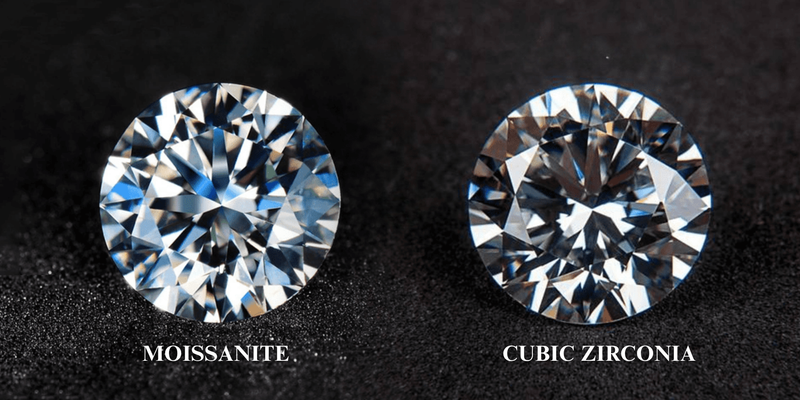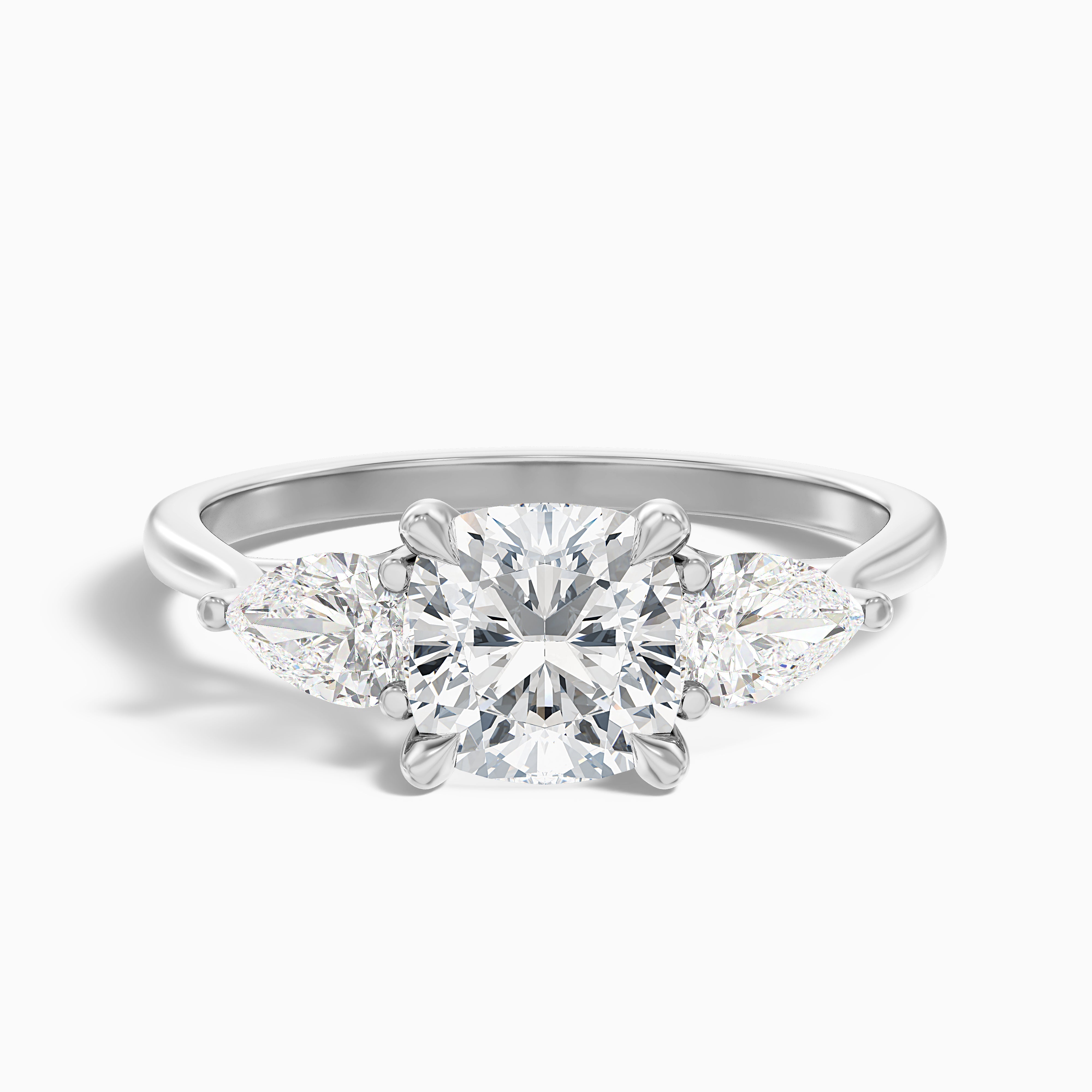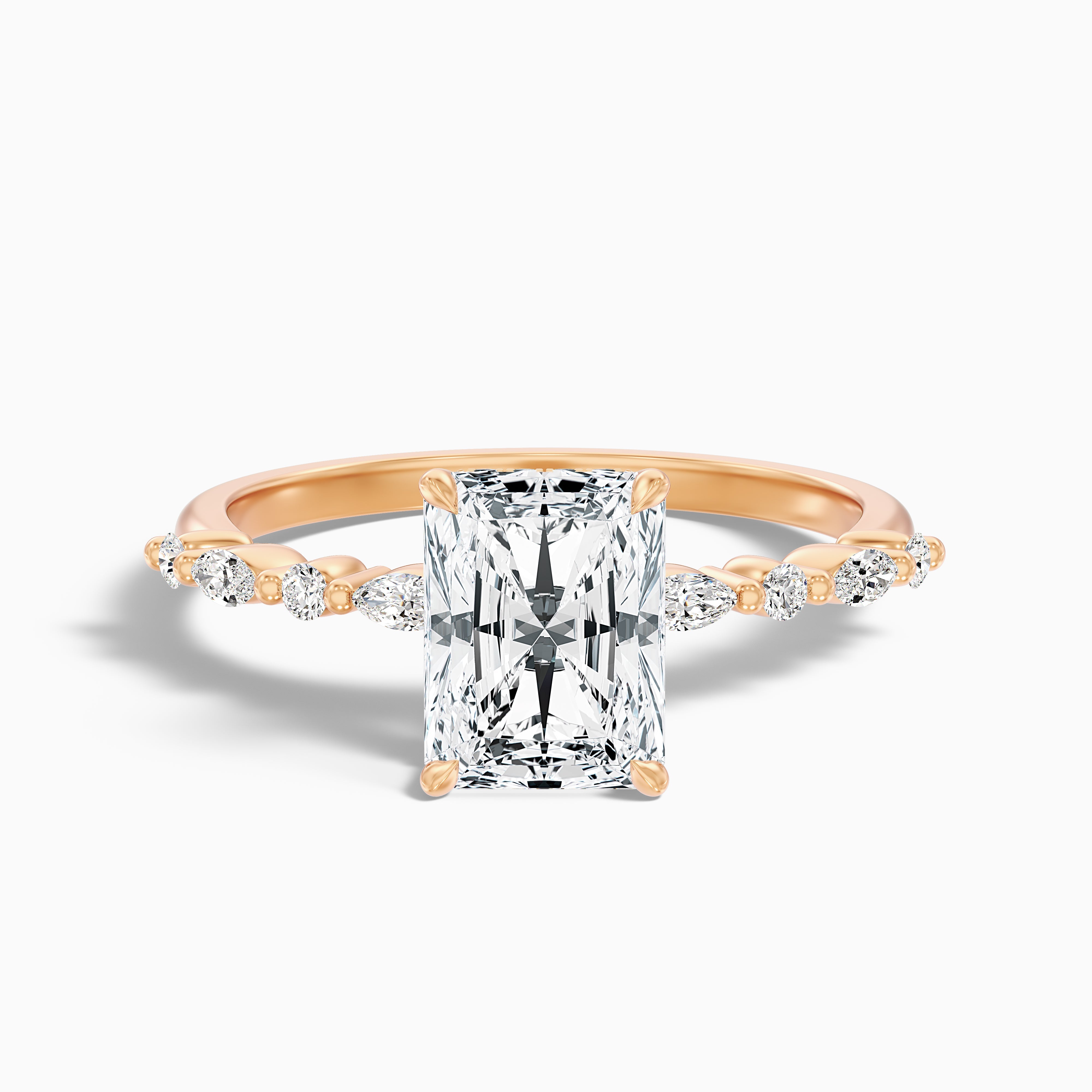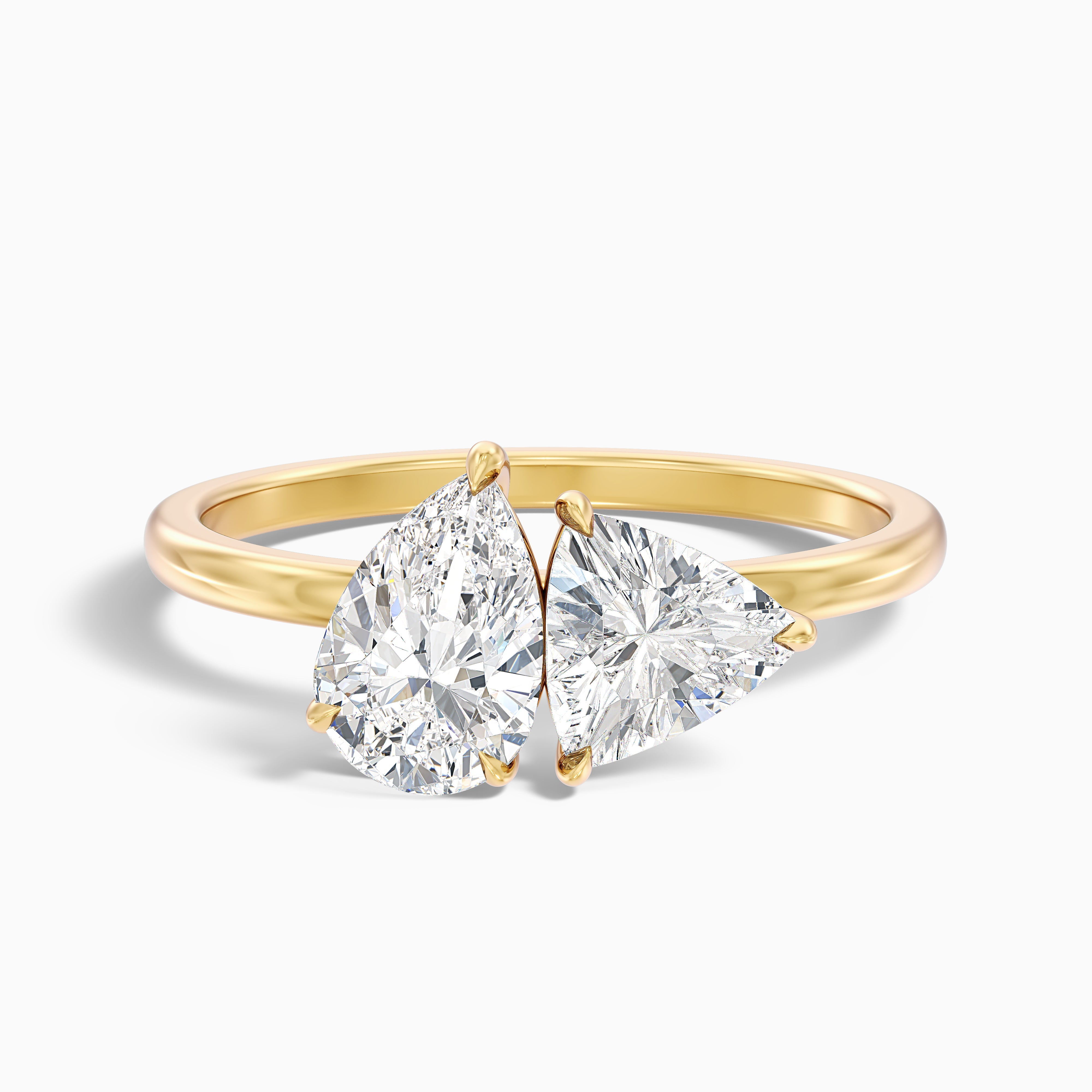Moissanite Vs Cubic Zirconia: Complete Comparison Guide

When looking for alternatives to diamonds, consider the Moissanite vs cubic zirconia comparison to make an informed decision. Both stones are very beautiful and do not cost as much as diamonds, but their quality, longevity, and long-term value are very different. This guide will help you figure out which gemstone is best for your wants, budget, and way of life.
What Is Cubic Zirconia?

Cubic zirconia (CZ) revolutionized affordable jewelry when scientists first created this lab-created diamond alternative in the 1970s. This synthetic gemstone consists of zirconium dioxide in a cubic crystal structure, engineered to mimic diamond's optical properties.
CZ captivates jewelry lovers with its crystal-clear appearance and impressive light reflection. The stone closely resembles a diamond's visual characteristics, making it nearly impossible for untrained eyes to distinguish between them at first glance. Manufacturers can produce CZ in various colors, though colorless versions remain most popular for engagement rings and wedding jewelry.
The primary reason for CZ's widespread popularity stems from its remarkable affordability. While diamonds cost thousands per carat, cubic zirconia delivers a similar visual appeal for mere dollars. This accessibility allows couples to enjoy the diamond look without the premium price tag, making luxury jewelry available in every budget.
What Is Moissanite?

Moissanite has an interesting history that starts in 1893, when a French scientist named Henri Moissan found small crystals in a meteor hole in Arizona. He initially mistook these crystals of silicon carbide for diamonds. It was not until later that he realized he had found a brand-new mineral that is originally found in meteorites.
The jewelry market today sells lab grown Moissanite because wild stones are rare. Scientists are able to make this gem from space in controlled lab settings, creating stones big enough to use in jewelry. This process guarantees uniform quality and ethical sourcing, which makes the product appealing to people who care about the environment.
Moissanite is known for being too bright and too hard, making it shine more than many natural jewels. The stone has a higher refractive index than diamonds, which makes stunning light shows that people can see from other rooms. With an amazing durability rating of 9.25 on the Mohs scale, Moissanite is both beautiful and long-lasting, almost equal to diamonds but a lot more affordable.
Visual Differences: Sparkle, Brilliance, and Fire
Knowing how each gem changes when exposed to light shows the biggest differences between these diamond options. Both stones react with light in different ways, giving them unique visual traits that affect how they look and how desirable they are.
The fiery color effect in Moissanite comes from the fact that it has a higher refractive index and more dispersion than diamonds. When light hits Moissanite, it breaks up into beautiful rainbow flashes that move across the surface of the stone. Under bright lights, this dramatic fire makes the stone look like a dance ball, with bright colors and sparkles that some find beautiful and others think are too flashy for formal settings.
On the other hand, CZ's more muted, glassy sparkle is more like how diamonds work with light. Cubic zirconia reflects light with bright white flashes and little color dispersion. This gives engagement rings the standard diamond look that most people expect. But CZ does not have the depth and richness of light interaction that you find in better gemstones.
When making a diamond vs. Moissanite comparison, the intense fire and rainbow flashes of Moissanite instantly set it apart from diamond's more refined brilliance. CZ looks more like a diamond, but it does not have the small details that gemologists use to tell the difference between fake and real diamonds.
Durability: Which One Lasts Longer?
The Mohs scale scores are a scientific way to compare how durable different gemstones are. On this scale, CZ is about 8 to 8.5 on the hardness scale, and Moissanite is about 9.25. To give you an idea, diamonds are 10 on this list, which makes Moissanite the second-hardest rock used in jewelry.
These differences in hardness show up in scratch resistance and durability. Every day activities do not scratch Moissanite, and with the right care, it will stay polished and shine for decades. The stone can handle common home chemicals, high and low temperatures, and accidental hits that could damage softer stones.
Even though cubic zirconia is pretty strong, it wears out faster than Moissanite. Over time, CZ gets little scratches and loses its shine, especially if you wear it every day. After a few years of usage, a professional repolishing is required to restore the stone's original sheen.
The CZ vs Moissanite durability comparison clearly favors Moissanite as the best choice for everyday wear. Moissanite’s superior hardness makes engagement rings and wedding bands a good purchase.
Price Comparison: Moissanite vs. Cubic Zirconia
The average price per carat shows that these diamond options are very different from each other. Each carat of cubic zirconia is only a dollar, and most high-quality stones cost between $20 and $40. Moissanite is much more expensive. Depending on size, cut, and quality grade, it can cost anywhere from $400 to $1,200 per carat.
Long-term value is more than just the price of the original purchase. You can save money right away with CZ, but because it is so soft, you will probably need to change it frequently. Moissanite is very strong and will look beautiful for many years. This makes it more cost-effective over time, even though it costs more at first.
The reason CZ is cheaper but goes out faster has to do with how much it costs to make and how the material works. Using simple tools and materials, manufacturers can make cubic zirconia quickly and cheaply. Moissanite is more expensive than cubic zirconia because it needs more complex tools and takes longer to make, which justifies its premium pricing in the marketplace.
Maintenance and Care Tips
If you know how each diamond ages, you can keep its beauty over time. Moissanite keeps its shine and fire forever with very little care. It does not show much wear even after decades of daily use. CZ loses its shine over time and gets scratches on the surface that make it less clear and sparkle.
The best ways to keep them looking brand new are a little different for each stone. If you want to keep the surfaces of both gems in good shape, clean them often with warm, soapy water and soft brushes. Do not use harsh chemicals on the metal settings; however, both stones can handle most home cleaners without any problems.
No matter what kind of stone you choose, cleaning and storing it safely will protect it. Do not put pieces of jewelry together with other jewelry; instead, store them separately in soft cloth bags. To keep them from getting damaged, take off the rings when you do hard work, swim, or clean.
When cleaning at home is not enough to bring back CZ's original shine, professional cleaning services can help. Moissanite rarely needs professional help besides normal jewelry maintenance, like checking the setting and tightening the prongs.
 Customize Now
Customize Now
 Customize Now
Customize Now
 Customize Now
Customize Now
Which One Is Right for You?
When deciding which one of these gemstones you want to select, think about your budget, how you want to live, and what things look like. Because everyone has different wants and needs, there is no stone that is always better than the other.
If you care about longevity and do not mind its unique fire, Moissanite is a great choice for long-lasting beauty. This option is good for people who are active, wear jewelry every day, or like things that have unique optical features. When making a Moissanite vs. diamond vs. cubic zirconia comparison, those who want diamond-like performance without the high price should consider Moissanite.
Choose CZ for short-term or budget-conscious wants when you need to save money right away. Cubic zirconia is great for fashion jewelry, temporary engagement rings, or travel jewelry, where the risk of losing it is more important than how long it will last. This option is good for people who are looking at alternatives to Morganite and Moissanite or who want a variety of jewelry options but do not have a lot of money.
When deciding between cubic zirconia and Moissanite, take your personal style into account. If you like a diamond-like appearance with understated elegance, CZ offers that timeless style. Moissanite is the most brilliant stone if you like the way it sparkles and do not mind people staring when light hits it.
Conclusion
The choice you make after a comparison of Moissanite vs. CZ ultimately comes down to your goals, budget, and intended use. Moissanite is more durable and has a higher long-term value, while cubic zirconia is cheaper right away and looks like a diamond. Both stones are great options compared to diamonds. They both work well in different situations and meet a wide range of customer needs.



